When a tourist or local strolls around downtown, shopping or dining or ‘playing’, it’s likely rare they gaze up at one of our many hotel/casino conversion projects and ponder its occupancy rate as a metric for success…unless you’re the developer, an economist, or an urbaNerd like me. For the typical downtown visitor or resident, their experience is more likely measured by what’s right in front of their eyes at street level.
Downtowners live downtown for the hustle. The bustle. Walk to plays, movies, restaurants and bars…to experience the heartbeat of the city, be it irregular, flatlining or 80% of its MHR.
This is why street level activation for downtown projects is soooo critical, particularly for large block-size hotel/casino conversion projects.
Reno is home to one of the most unique downtowns in the country. We are the only city, to my knowledge, that’s had to repurpose tens of thousands of square feet of dying or dead casino and hotel space and do…something…with it. The towers of these closed hotel/casinos were converted to residential units or reopened as non-gaming hotels.
The more significant challenge to these conversion projects is what to do with the cavernous street-level former-casino space. These spaces are large, often tens of thousands of square feet, open, and bumps against downtown sidewalks with no setbacks. When they comprise a whole city block, it becomes that much more imperative to focus on how the project will interact with the surrounding street and properties.
The results downtown thus far have been…mixed. Let’s take a look at some of them and then turn our attention to Reno City Center, the largest hotel conversion project in downtown’s makeover history, comprising two city blocks.
These conversion projects range from innovation to pure laziness and disregard for the neighborhood that gave developers the opportunity to build the project in the first place.
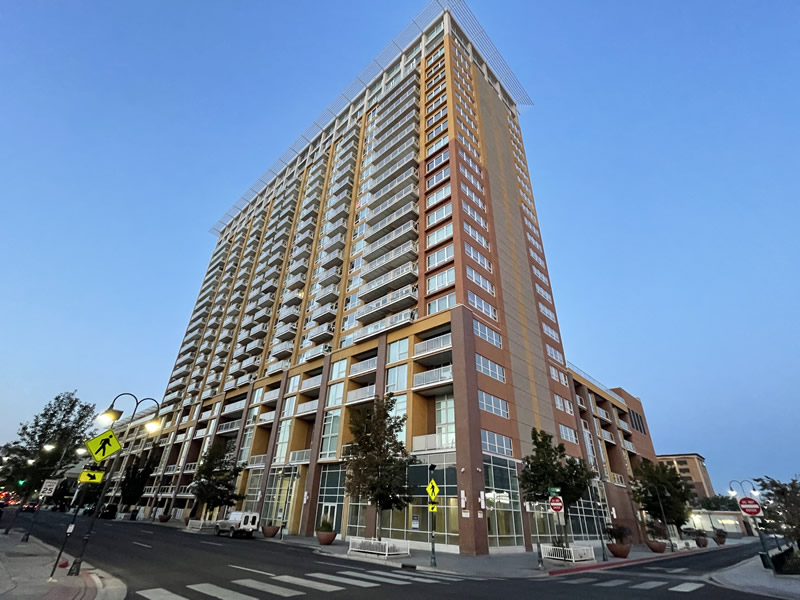
The Montage
It's so far the nicest residential project downtown. It's gorgeous, offers one, two and three-story units and everything from penthouses to lofts with soaring ceilings to street-level units. It’s sort of surprising most of its commercial spaces, adorned with floor to ceiling glass facades facing Commercial Row and Sierra Streets, remain empty still. That could be because of what’s on the east side of Sierra Street. Or the asking price. Or who knows.
This was the right building built at the wrong time. Its ribbon cutting was April 2009. Shortly after completion, the real estate world and everyone’s overly inflated home values plummeted due to bunk mortgages, inventory not in demand, and a host of other reasons. The bank that funded the construction of the Montage folded, and wow am I thankful the project was actually completed prior to that happening. It could have been catastrophic, with half a project left rotting downtown.
Developer Fernando Leal’s vision for this building was ultimately realized, even if it took another six years for the building to fill up. The building is full of mostly full time residents. It took a while for it to be a success, but in the end, it was. Except for the street-level commercial. What’s up with that? Let’s get those empty spaces filled with commercial!
WHEN: Opened as residential in 2009.
PRO: Beautiful, next-level amenities, one of the nicest residential projects downtown thus far.
CON: Most of the commercial spaces are still empty. But for this block to be successful, the east side of Sierra Street needs to be addressed.
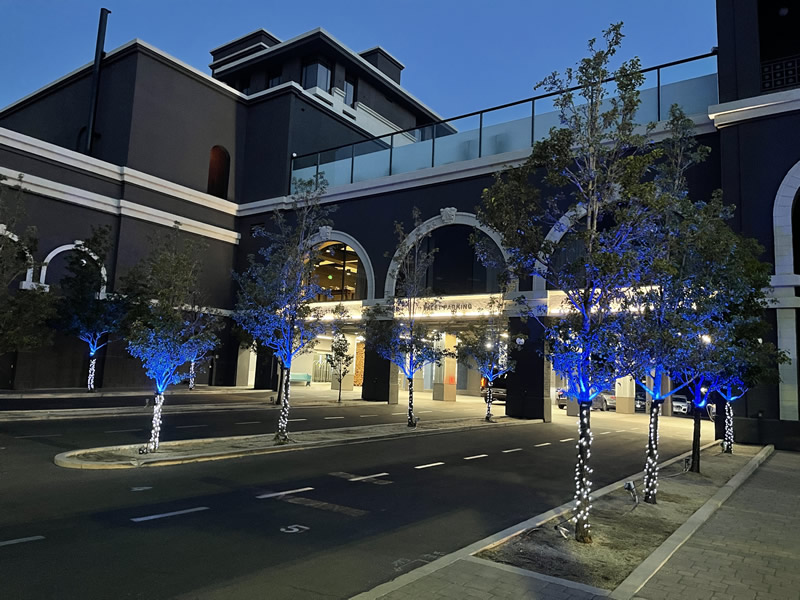
Renaissance hotel
Renaissance Hotel was one of two projects downtown that remained a hotel but shed their casino…and cigarettes. Formerly the Siena, and Holiday prior to that, they repurposed the large casino space into an indoor bocce ball complex. I have no idea if guests use it, but it’s a great use of challenging space, and Siena’s transformation into Renaissance was gorgeous.
WHEN: Casino closed 2015, reopened as non-gaming Renaissance, a Marriott brand, in 2017
PRO: Inventive use of former interior casino space is appealing to guests. Utilizes riverfront.
CON: No shops at street level - no street engagement. I feel they sort of get a pass on this because they aren’t technically a mixed-use project. Mill Street was abandoned for project for plans that never materialized.
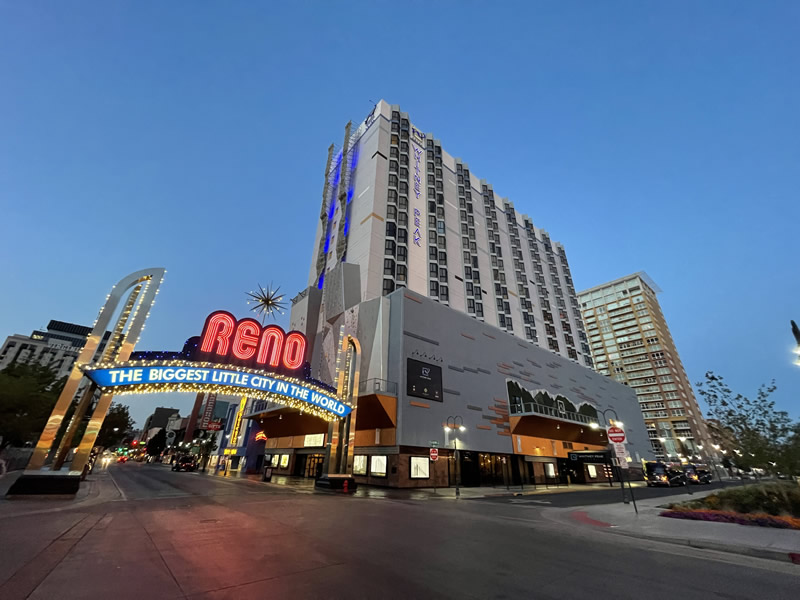
Whitney Peak
Whitney Peak briefly operated as CommRow, and Fitzgerald’s before that. Like the Renaissance, although not technically a residential conversion, becoming non-gaming was an unheard-of concept for downtown at the time, and they still had to figure out what to do with three levels of former-casino and office/restaurant space. This project gets the award for most innovative reuse. The three empty levels turned into a restaurant, lobby, concert/event venue and an indoor/outdoor climbing gym with a 200-foot tall climbing wall that overlooks our iconic arch.
WHEN: Converted from Fitzgerald’s to non-gaming Commrow in 2011. Whitney Peak opened in 2014.
PRO: Innovative use of former casino space, street activation with restaurant, second-level climbing deck, and entrance to Cargo and Basecamp along Commercial Row all combine to create more activation than when it was a casino.
CON: The Sierra street portion of their property looks awful still, and their prime vacant lot on Sierra and Commercial row remains undeveloped. Take a cue from the newly transformed Locomotion Plaza and Sands and install large-format art until its ready to be developed, maybe?
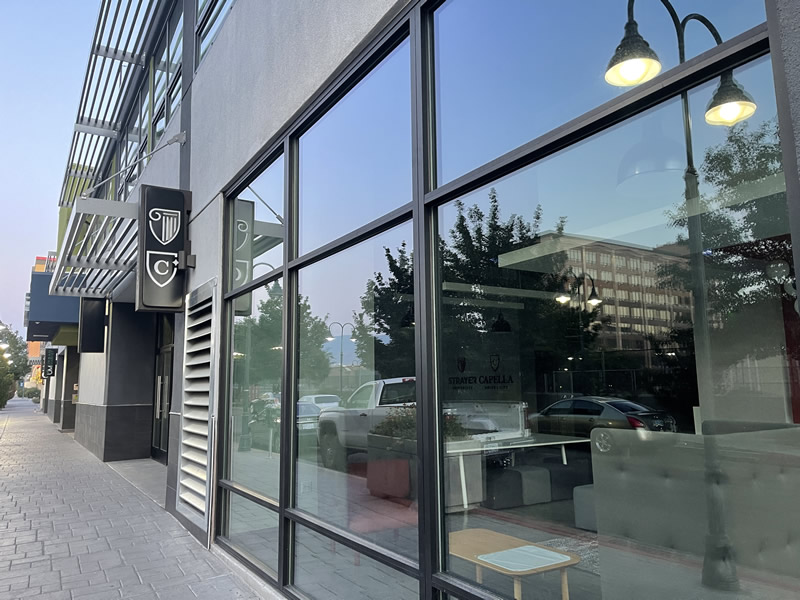
3rd Street flats
I love this project. It was formerly the Kings Inn, deserted and abandoned for 35 years, without a doubt downtown’s biggest eyesore, and a big headache for everyone. Tied up in bankruptcy and litigation, it was impossible to do anything with the building, including selling it or even demolishing it. The building finally sold in 2014. The casino space was converted to commercial spaces and the lobby. This project features a rooftop deck and pool, left over from the old resort, and gets an A+ for street level activation, featuring a neighborhood grocery store, university and restaurant.
WHEN: 2016
PRO: Perfect reuse of former casino space, modern units, attractive building
CONS: none
Riverwalk Tower/Residences at Riverwalk
The struggling Comstock Hotel closed November 2000, after its new owner was turned down for a gaming license, citing ties to drug runners, mobsters and Heidi Fleiss. That’s old Reno for you. In 2001 much to the dismay of surrounding businesses, it was reopened as a crime-ridden weekly before shutting down again and reconstructed as condos in 2006. Like 3rd Street Flats, hotel rooms were gutted and converted into residential units with full kitchens and bathrooms, whirlpool tubs, balconies were added.
WHEN: Casino closed 2000. Residences at Riverwalk opened 2006.
PRO: The units are nice, building features a rooftop pool and the added balconies help break up the boxy tower.
CON: A massive con, to this day, the former street-level casino section remains a boarded up scar on West Street, squandering an opportunity to activate the west side an otherwise bustling street thanks to West Street Market, 5 Star Saloon and Crafted Palette. Gets an F for street activation.
Belvedere Tower
Belvedere Tower was formerly the Sundowner. It’s 11-story tower was built in 1975, and in 1979 a 19-story ‘south’ tower was added.
According to the owners, their profits started to dwindle when the Silver Legacy opened, and the Sundowner closed December 2003. In 2007, the smaller tower reopened as condos, then apartments, amid a sordid legal history of tax liens, unpaid property taxes and other issues from 2006 to 2011. The project was never finished as envisioned, there was a fire in the east tower, and more recently, the casino portion and south tower were separated from the rest of the property ‘legally’ and put up for sale. It sold in 2017 yet still remain undeveloped. It still remains empty to this day.
WHEN: 2007 opened as condos
PRO: It didn’t remain totally vacant and undeveloped, and the Belvedere makes for great student housing.
CON: Its best assets remain empty and undeveloped. There is no street-level activation, it’s unattractive, and 400+ residents could be added to downtown if the south tower were developed into residential.
Riverboat
The Riverboat Hotel and Casino closed abruptly in 1998. It was a controversy…workers were fired on the spot, guests were shuttled over to Comstock Hotel Casino, and that was that. Unlike with the Horseshoe and Holiday Hotel closing, workers were not given 60 days notice they were given no notice. I’m not sure when but at some point, the former hotel rooms were rented out as weeklies. In 2007-2008 there was a ray of hope. The casino portion of the former hotel casino was remodeled into a drug store. Longs Drugs was supposed to open there. The renovation progressed to the point of even having shelving installed…practically turnkey and ready. But then CVS bought Longs Drugs in 2008, and they made a decision not to open the store, but continued to pay the lease that Longs Drugs signed.
In one of the more frustrating moments in downtown Reno’s makeover, a large turnkey store space with surface parking AND a drive-thru, at one of downtown’s busiest pedestrian intersections, remains empty for over a decade. But alas, there is hope! The mixed-use building recently sold for $11.2 million.
PRO: Prime location, space is already set up for commercial at the street level. Building recently sold. The commercial space is practically turnkey for a retail store
CONS: No street activation as of yet, but there’s great potential for this building. If the new owners keep the commercial space as is, it will be competing with Reno City Center, a project that needs to fill 300,000 square feet of retail space. A better plan might be to break the commercial space up into several smaller components, much like the commercial space that wraps around the Palladio’s street level
Virginian
It was difficult to find older history on this building, prior to 2004, when Cal Neva was using it for lodging, and closed it in 2004. The building has a unique feature, a four-level parking garage with car-elevator access only. Siegel Group purchased The Virginian in December 2013 for $2.38 million after also purchasing the Truckee Lane Building earlier in the year. In Feb. 2015, Siegel also purchased the Nevadan across the street from The Virginian and updated it. Senator Hotel was purchased in 2008 and turned into Siegel Suites. They also purchased the El Cortez.
WHEN: Siegel Group opened Virginian in 2016.
PRO: They did update the rooms, fixtures, baths, beds, etc. It initially was affordable. When you consider unbeknownst to many, many weekly mold-infested motels downtown were charging upwards of $1000 a month for horrible living conditions, Siegel Group’s rates for Virginian and lack of a credit check were appealing to those who needed stable housing. I believe it’s ‘full’
CON: Like everywhere else, rates increased. The street level looks ‘ok’. Luckily it doesn’t have much street frontage compared to other hotels. But if you look up, you see the exposed, unfinished project, and it’s not one of the more attractive things on Virginia Street. When compared to the rendering, there’s no doubt it was left unfinished. It's as if Siegel Group decided 'meh, no one is going to look or notice anything above the street level.'
Riverside Artist Lofts
The Riverside Artist Lofts is one of the first hotel conversion projects in Reno, if not THE first. Designed by noted Nevada architect Frederic J. DeLongchamps, and built in 1926, the Riverside Hotel was a stunningly gorgeous six-story brick building. Built to serve out-of-state visitors serving out their required residencies for divorces in Nevada, the Riverside outlived its usefulness in the ‘70s and in 1987 it closed. It was nearly demolished around the same time as the Mapes, but was saved by the efforts of Sierra Arts and Artspace, a non-profit that specializes in converting spaces into residences for artists. Artspace converted the upper five floors into 35 units with open floor plans and large windows that admit abundant natural light.
Wild River Grille and Sierra Arts call the street-level home.
WHEN: Opened in 2000, same year Mapes was demolished. Built in 1926/27.
PRO: Low-rent spaces specifically for artists.
CON: None

The El Cortez
The El Cortez’s original section opened in 1931, with 60 rooms, to accommodate a shortened residency requirement for divorces. The hotel was considered luxurious at the time. In 1941 the hotel was expanded, nearly doubling the room capacity and adding additional commercial spaces, including the Trocadero Room, a casino/entertainment venue that hosted nationally known bands and signers. As with the Riverside, it began to lose its appeal in the late ‘60s, and closed in the ‘70s.
In 2014, Siegel Group bought the El Cortez, and made improvements including modernizing the plumbing, bathrooms, and beds. To the horror of local historians, however, they also began replacing all the old windows without running it by the Historic Resources Commission nor obtaining the proper permits, for the El Cortez is on the national register of historic places. It currently operates as a Siegel Suites location, renting both weekly and monthly. Noble Pie reactivated the streetfront before closing, and a popular night club also calls the El Cortez home.
WHEN: Opened as a Siegel property in 2014
PRO: Most of the El Cortez stayed intact as part of the remodel.
CON: Could be better at street activation
Center + Pine
Center + Pine is part of a block project that also included converting a liquor store to a pizza shop, and another shuttered building into See See Motor Coffee, which is now the Hub and a bike shop. The practically-dead block was purchased in 2016, and by 2017 the block was, and still is, bustling with activity. This too is one of my favorite conversion projects, because you can see night-and-day difference, especially when visiting the developer’s web site, of what it did to the block.
Formerly a motel, then a weekly, it is now high-end apartments, and houses commercial on the street level, including the immensely popular Pine State Biscuits. For a while the street was dubbed ‘little Portlant’ because of the three Portland-based businesses that called it home. Two remain.
WHEN: 2016/2017
PRO: Beautiful project, completely transformed entire block
CON: none

Reno City Center
So that brings us to Reno City Center, by far the largest hotel/conversion project downtown. The project, formerly Harrah’s, spans two city blocks downtown. Plans include apartments, a Starbucks, an Asian fusion restaurant with ramen, an interactive pub, flower shop, doggy daycare and a grocery store. A major unnamed company will call the available office space its worldwide headquarters.
When you look at the six+ acres the project comprises, and the multiple blocks of streetfront, one can see how critical it is they get the street-level activation correct. You can see from the other projects listed here, how it can make or break a street, neighborhood, or an entire section of downtown.
2nd Street and Center Street will need the most activation, and I’m really hoping the grocery store will be located right on the corner of 2nd and Center. If you look at the renderings for this project, the former Harrah’s Plaza will gain plaza-facing retail and commercial, hopefully adding some punch to that block of Virginia Street, of which Whitney Peak, Siri’s and Virginia Street Brewhouse is located.
The developers of Reno City Center, CAI Investments, can consider this entire article a plea to please not skimp on the importance of not making the streets surrounding the property a dead zone. To CAI Investments, take a look at your predecessors, see what they did right on wrong, and please please, get it right.
WHEN: Due to open in 2022
PRO: Intelligent re-use of a massive property downtown. Further benefits TBD.
CONS: Hopefully none, when it opens



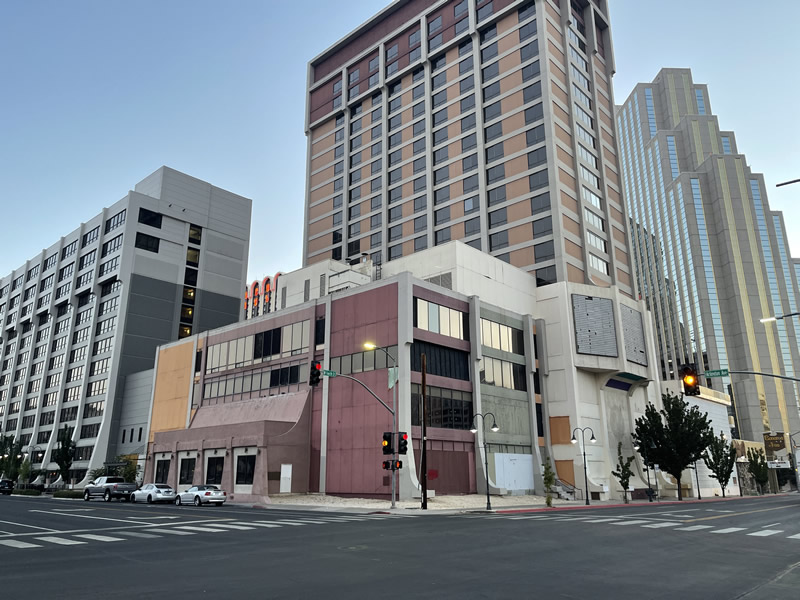
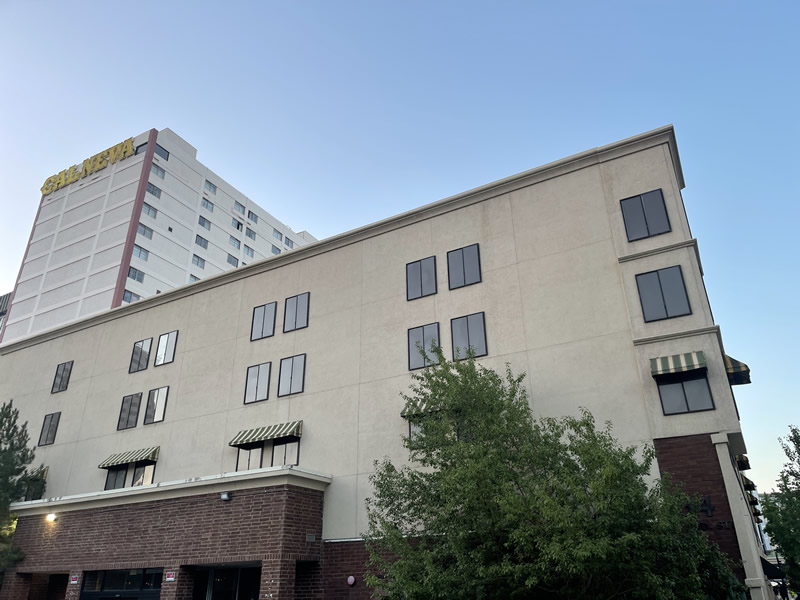

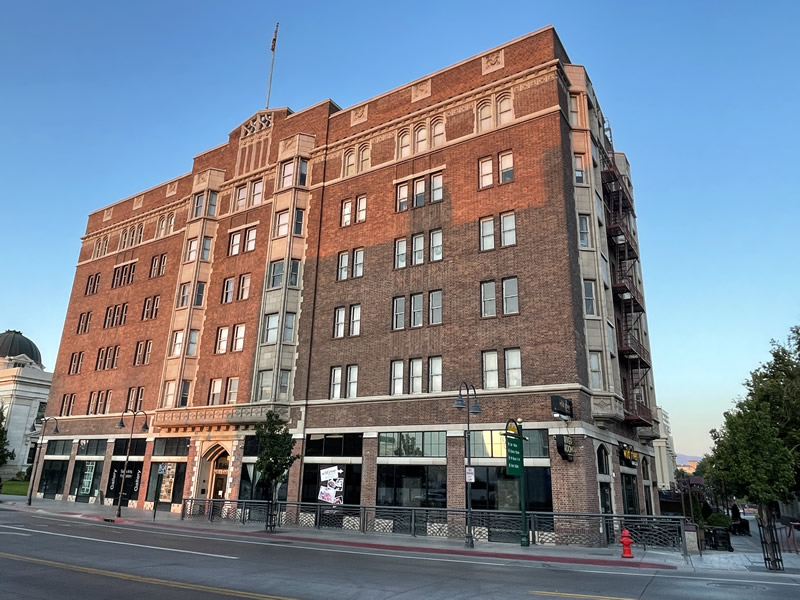
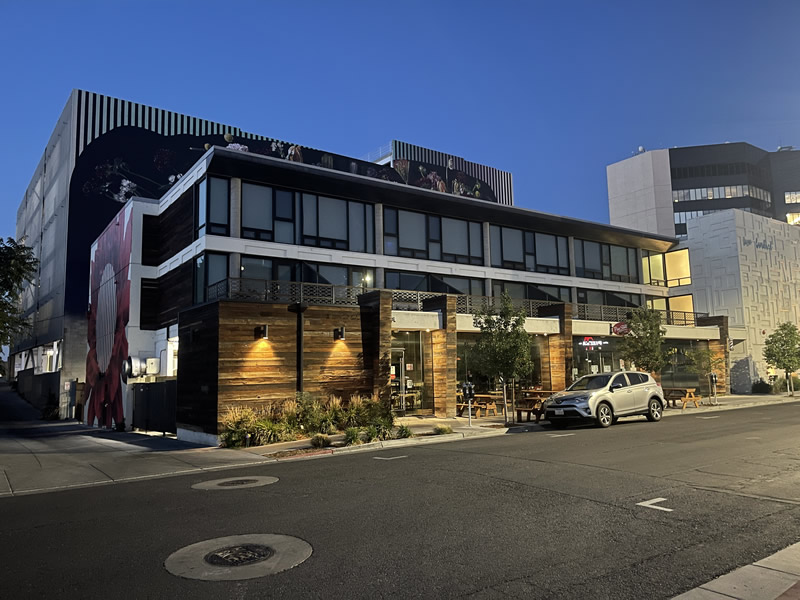
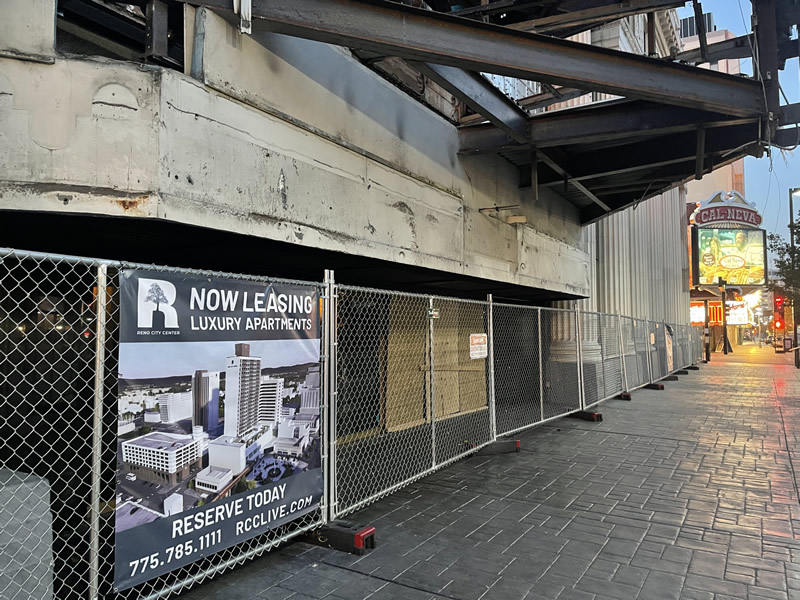
Thanks for your report. I agree with your assessment that street level development, or lack there of, is a weakness in many of these projects.